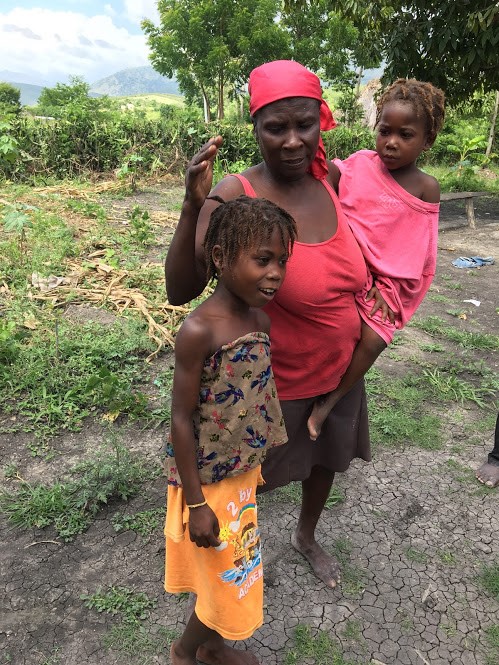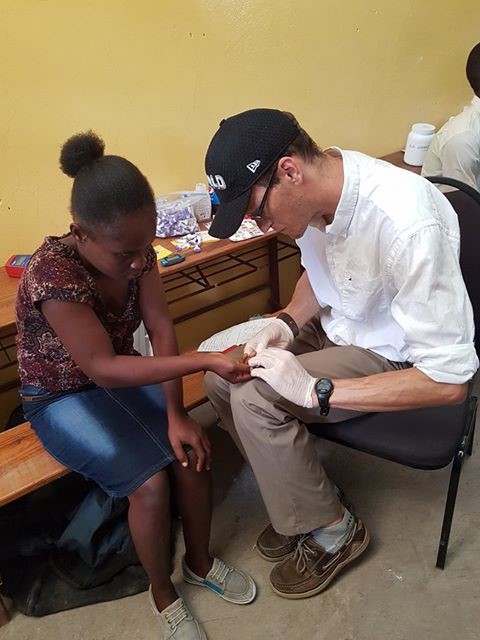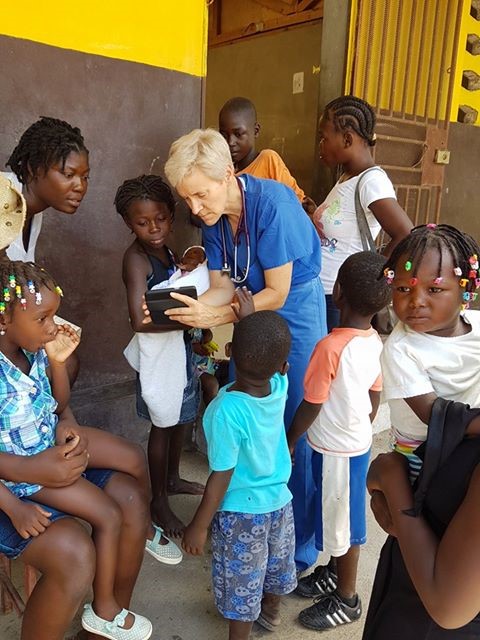For 200 Women, the Start of a New Life
share
By Kathleen Roeder, MD
Recently I traveled to Gros Morne, Haiti, as part of team to launch a program that will change the lives of women and children living in extreme poverty. The program is called Chemen Lavi Miyo (CLM)—a Creole phrase translated as “Road to a Better Life.” It is sponsored by Mercy Focus on Haiti, a ministry of the Sisters of Mercy of the Americas.
Two-hundred women were selected for the CLM program. These women live in misery; they are poorer than poor and struggle to feed their children. In 18 months, upon completion of the program, the selected women will be able to feed their children every day. They will live in a house with a good tin roof and have their own latrine. They will be able to send all or some of their children to school; they will have two sources of income, a plan for the future and the confidence to know that they can succeed. They will stand proud.
My team, all medical professionals, met with each participant of the CLM program as well as her entire family. We interviewed the families to identify their medical needs, address them as best we could and arrange management of them for the 18 months of the program.
Home Visits
We visited some of the CLM members in their homes. Packed into a pickup truck, we began a trip through brush, along dirt roads and up steep paths to be greeted by women eager to share their new journey with us.
Alma’s house was the first stop. We walked along a dusty, rutted path to the back of a compound of houses, each set in the middle of a small patch of land possibly considered a garden, but with no plants surviving the Haiti sun. The house was made of vertical sticks woven together with vine roughly in the shape of an oval, covered with thatch made from palm fronds. The threshold was raised to prevent the rain from flowing through the house when it runs high. The floor inside was dirt, pounded flat by many feet over many years. There is no visible furniture or bedding. Cooking was done outdoors on a bed of three rocks supporting scrounged pieces of wood for a cook fire.
I also saw the beginning of a goat enclosure—as part of the program, the women will receive animals to raise as an enterprise activity. Alma will receive two goats and a pig, so she was preparing for their arrival.
Her children gathered around us, touching the “blancs,” (the term Haitians use to refer to foreigners, although it translates as “white”) to see how our skin felt, and some of the neighbors came over to be part of the celebration.
The second home, Micaline’s, was a short drive away. A steep, rain-rutted path led to a stick house in a small area of land ready for planting. Here there were no nearby houses. Micaline cares for her older husband and her three granddaughters. Her daughter, the girls’ mother, has returned periodically on at least three occasions from Port au Prince with a new baby and left the baby with Micaline to raise. The girls are about 11, 8 and 6; all looked healthy except for the redness of their otherwise black hair, a sign of micronutrient deficiency. We saw the beginning of a goat enclosure, also awaiting the arrival of Micaline’s animals. The family was pleased to meet us and ready to start their 18-month journey to a better life.
Medical Interviews
Over the next few days, our medical team personally interviewed all the CLM members and their families at the medical clinic. With help from interpreters, we interviewed each member of the family, trying to assess if a problem exists that need immediate intervention, timely medication, referral for another level of care, or follow-up later. A Haitian nurse will manage the continuing care and follow-up that many patients require during the 18-month period of the program
We distributed vitamins and iron supplements. Since most of the adults cannot read, we gave instructions clearly, repeating for clarity. As we explained to one family this medication regimen which is clearly written on the label, their young son piped up from the back of the family unit, pointed to the label and said to his mother, “It’s written there.”
His mother proudly said, “That’s why we send him to school.”
This boy is the future. He and all the other children who will be educated because of the strength and resilience of these women CLM members are the future of Haiti. And we have done our small part in the change.
Learn more about the CLM – “Pathway to a Better Life Program.


